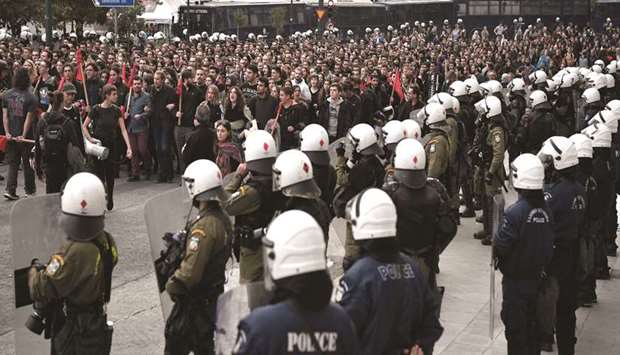Thousands of Greeks, including former prime minister Alexis Tsipras, marched through central Athens yesterday evening to mark the anniversary of a violently quashed student uprising in 1973 that helped topple a military junta.
Separate demonstrations are being held in Greece’s other major cities.
The annual march often becomes a focal point for protests against government policies and in recent years against austerity, after a decade-long debt crisis.
The annual march regularly descends into violence and some 5,000 officers were mobilised for the day, backed by drones, a helicopter and water cannon, police said.
At the front of the procession, ending at the US embassy, youths held a blood-stained flag that belonged to the students engaged in the 1973 revolt.
Protesters resent Washington for its support of the 1967-1974 military dictatorship.
Tsipras, a leftist who lost parliamentary elections to his conservative rival Kyriakos Mitsotakis in July, took part.
Dressed in a leather jacket and jeans Tspiras hooked arms with other officials from the Syriza movement during the procession.
Since Friday, many people have laid wreaths and carnations at the Athens Polytechnic, site of a bloody clampdown on November 17 1973 when tanks smashed through the gates to crush a revolt that heralded the end of the junta.
On Monday, police clashed with students protesting against the shutdown of a prominent Athens university, the University of Economics and Business.
Authorities had raided the university to confiscate materials that they said were typically used in violent demonstrations.
It was the first time police and protesters had clashed inside university premises since the conservative government’s abolition of academic sanctuary in August.
The sanctuary law, a legacy of the 1973 crackdown on students, left a deep-rooted suspicion towards authority among Greeks.

Riot officers stand in line as students march yesterday in Athens, during the annual march towards the US embassy to commemorate the 1973 students’ uprising against the US-backed military junta.


